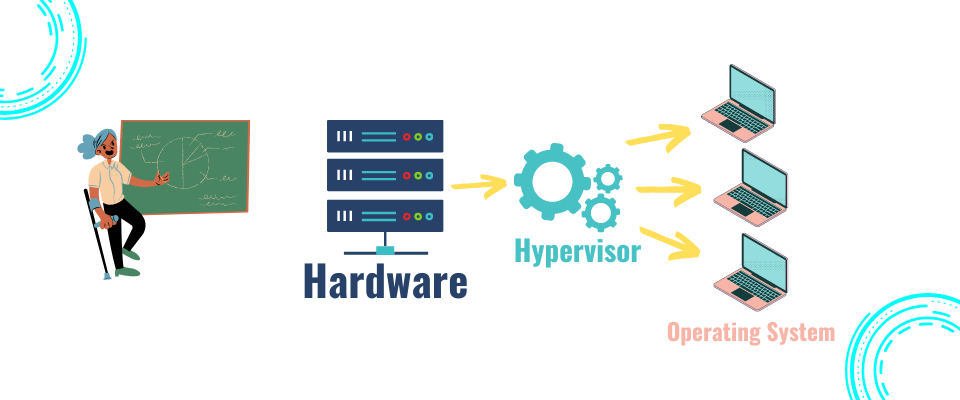Cloud - Concept
What is a Hypervisor?
Key concept: Hypervisor.
A hypervisor is the software that creates and runs virtual machines (VMs). A critical concept in cloud implementation. A hypervisor, sometimes called a virtual machine monitor (VMM). The main purpose of hypervisor is to isolate operating system and resources from the virtual machines and enables the creation and management of those VMs. In simple terms, a hypervisor is a software that enables the virtualization of computer hardware. It allows a single physical computer (the host) to run multiple virtual machines (VMs), each of which acts as an independent and isolated computer system. These VMs can run different operating systems and applications as if they were running on separate physical machines. The primary purpose of a hypervisor is to efficiently share the physical resources of a computer, such as CPU, memory, and storage, among multiple VMs. It provides a layer of abstraction between the hardware and the VMs, managing the allocation and utilization of resources for each VM.
Types of Hypervisors.
- Type 1 Hypervisor (Bare-metal Hypervisor):
- Type 2 Hypervisor (Hosted Hypervisor):
This type runs directly on the physical hardware without the need for an underlying operating system. It has direct access to the hardware and is more efficient as it eliminates the overhead of an additional operating system. Examples of type 1 hypervisors include VMware ESXi, Microsoft Hyper-V, and KVM (Kernel-based Virtual Machine).
This type runs on top of a standard operating system (e.g., Windows, macOS, Linux) as an application. It relies on the host operating system to manage hardware resources. Type 2 hypervisors are often used for desktop virtualization and testing environments. Examples of type 2 hypervisors include VMware Workstation, Oracle VirtualBox, and Microsoft Virtual PC.
Hypervisors play a crucial role in modern virtualization technology, allowing efficient utilization of hardware resources, simplifying management and provisioning of virtual machines, and enabling the creation of flexible and scalable IT infrastructures. They are widely used in data centers, cloud computing environments, and for development and testing purposes.
How Does an On-Premise Data Center Work?
Once the on-premise data center is set up, it becomes the central nervous system of your organization's IT infrastructure. Here's a simplified breakdown of how it works:
- Hardware Provisioning:
- Software Configuration:
- Data Management:
- Network Connectivity:
The data center's hardware, including servers, storage devices, and networking equipment, is carefully provisioned and connected to form a robust and reliable infrastructure.
The virtual machines created within the data center are configured with the necessary software and applications, tailored to meet specific business requirements.
The data center handles the storage, processing, and management of critical business data. It ensures data security, backups, and disaster recovery measures are in place to safeguard valuable information.
The data center is connected to the internal network, allowing seamless communication between different departments and facilitating access to applications and resources.
Why the hypervisor is essential in cloud computing?
Hypervisor technology is considered the foundation or base for cloud computing due to its critical role in enabling virtualization. Cloud computing heavily relies on virtualization to provide its various services and benefits.
- Virtualization of Resources:
- Resource Sharing and Allocation:
- Hardware Abstraction:
Hypervisors allow the virtualization of computer hardware resources, such as CPU, memory, storage, and networking. This means a single physical server can be divided into multiple virtual machines, each functioning as an independent and isolated entity.
Cloud computing is all about efficiently sharing and allocating resources among multiple users or tenants. Hypervisors manage the distribution of physical resources among the virtual machines, ensuring fair and optimal resource utilization.
Hypervisors abstract the underlying hardware, making it easier to manage and provision virtual machines without worrying about the specifics of the physical infrastructure.



